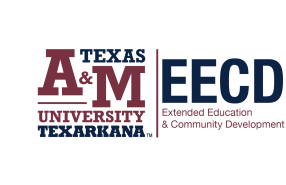
- Description
- Objectives
- Outline
- Materials
- System Requirements
If you enjoy writing and love a challenge, technical writing just might be a career for you. Our Fundamentals of Technical Writing course exposes you to all aspects of this form of writing, including how to translate technical documents into everyday language that people will understand. Technical writing requires writing, editing, and rewriting since clear writing is often the product of several revisions. We cover the basics of drafting documents, becoming a master of a particular subject matter, different writing habits, and tools of the trade, including image and publishing software. So get ready to turn the page and starting learning more about the interesting field of technical writing!
After completing this course, you should be able to:
- Identify preliminary tasks for technical writing, including types of technical documents
- Recall steps in creating a rough draft and ensuring clear writing
- Recognize essentials of the review process and how illustrations aid in comprehension
- List the overall aspects of a technical document, including editing, rewriting and design
Fundamentals of Technical Writing Module 1
The Technical Writing Discipline
In week one, we explore aspects of technical writing, including how to assess documents and audience. A technical writer essentially translates the hard-to-understand jargon of the technical field into something that is understood by the reader of the writing. We will also discuss preliminary steps that need to take place before writing begins, such as learning your subject matter and collecting information.
- What Does a Technical Writer Do?
- Technical Writing Jobs
- Preliminary Technical Writing Tasks
- Writing, Editing and Recognizing a Good Document
- Subject Matter
Fundamentals of Technical Writing Module 2
Clear Writing
Quality information is created in technical writing when an early analysis is made of your entire presentation, which is best done with an outline. It involves organizing the information you gathered into a logical format detailing how you plan to organize the document. This week we will discuss initial planning phases and how to outline material. We will also explore various writing habits and methods, such as the KISS (Keep It Short and Simple) principle and international considerations concerning translations.
- Organizing Content
- Initial Draft
- Writing Habits
- Procedural Writing
- International Considerations
Fundamentals of Technical Writing Module 3
Illustrations and Editing
Technical writers write, right? Yes, but technical writers also spend a significant amount of time handling visual items, such as graphics, illustrations, and photographs. Especially related to information available online, manipulating images is a huge aspect to a technical writer’s job. This week will examine the correlation between visuals and writing while exploring various types of illustrations. Also, we will explore the various aspects of how technical writing is edited, including information confirmation, style guidelines, and the difference between production editing, technical editing, and copy editing.
- Correlation Between Visuals and Writing
- Rich Media Graphics
- Style Guidelines
- Tech Writing Editing
- Reviews
Fundamentals of Technical Writing Module 4
Wrapping Up a Technical Document
In a large document, there are certain items that need to be placed in specific locations throughout your pamphlet or book. In this module, we will review these items, whether they are in the front of your document, or in the back. We are also going to review editing and proofreading your writing, testing the document and finally, putting a freeze on your document. Also, if you want to grow with the future of technical writing, you must know web page design and understand the languages involved with creating online material. This week we will take a look at types of markup and publishing software.
- Front and Back Sections
- Editing and Rewriting
- Design
- Tools of the Trade
- Word Processing, Image and Markup Software
Ed4Career is committed to being both environmentally conscious and making it easier for you to study! We’re making your education mobile! All of our textbooks are now provided as eTextbooks. You can access them on your laptop, tablet, or mobile device and can study anytime, anywhere.
The move away from physical books to eTextbooks means you get the latest, most up-to-date version available. This also makes your training more accessible, so you can study anywhere you have your phone or tablet. The best part is that all materials are included in your training cost so there are NO extra fees for books!
Internet Connection
- Broadband or High-Speed - DSL, Cable, and Wireless Connections
*Dial-Up internet connections will result in a diminished online experience. Classroom pages may load slowly and viewing large audio and video files may not be possible.
Hardware Requirements
- Processor - 2GHz Processor or Higher
- Memory - 1 GB RAM Minimum Recommended
PC Software Requirements
- Operating Systems - Windows 7 or higher
- Microsoft Office 2013 or higher. Also, you could use a general Word Processing application to save and open Microsoft Office formats (.doc, .docx, .xls, .xlsx, .ppt, .pptx)
- Internet Browsers - Google Chrome is highly recommended
- Cookies MUST be enabled
- Pop-ups MUST be allowed (Pop-up Blocker disabled)
- The Kindle Reader App or VitalSource Bookshelf App are needed for many of our courses (No special equipment needed. This can be downloaded for FREE onto your computer.)
- PowerPoint Viewer (if you do not have PowerPoint)
- Adobe PDF Reader
- QuickTime, Windows Media Player &/or Real Player
MAC Software Requirements
- Operating Systems - Mac OS x 10 or higher with Windows
- Mac office programs or a Word Processing application to save and open Microsoft Office formats (.doc, .docx, .xls, .xlsx, .ppt, .pptx)
- Internet Browsers- Google Chrome is highly recommended
- Cookies MUST be enabled
- Pop-ups MUST be allowed (Pop-up Blocker disabled)
- The Kindle Reader App or VitalSource Bookshelf App are needed for many of our courses (No special equipment needed. This can be downloaded for FREE onto your computer.)
- PowerPoint Viewer (if you do not have PowerPoint)
- Adobe PDF Reader
- Apple QuickTime Media Player
